Create Custom ELN Templates
Inspecting a Custom ELN in NOMAD GUI¶
In this part, we - Initially inspect an example custom ELN for polymer processing experiment in the NOMAD GUI together. - Then, review the main six guidlines needed to write custom ELN schemas together. - Finally, inspect the YAML file of the polymer processing example, and
Example: Inspecting a custom ELN for polymer processing in NOMAD GUI
Now let's inspect a simple custom ELN for Polymer Processing together. You can find the polymer_processing_schema.archive.yaml file in tutorial_16_materials/part_4_files or download it here. In order to see how it looks like in the NOMAD GUI, make a new upload, and drag and drop the polymer_processing_schema.archive.yaml* file, so that NOMAD can process it. Then create a new entry, based on this schema (scrreenshots).
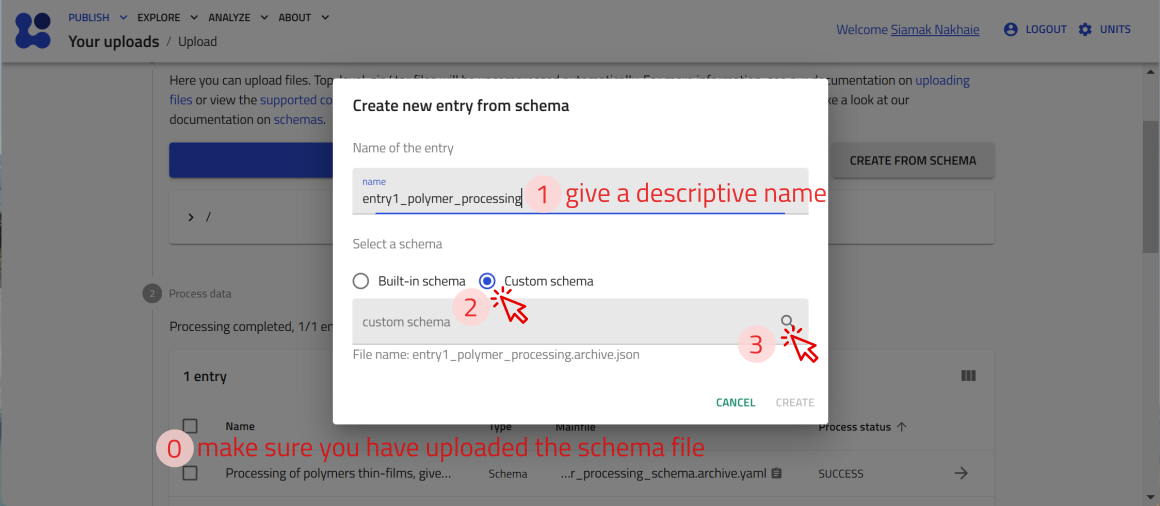
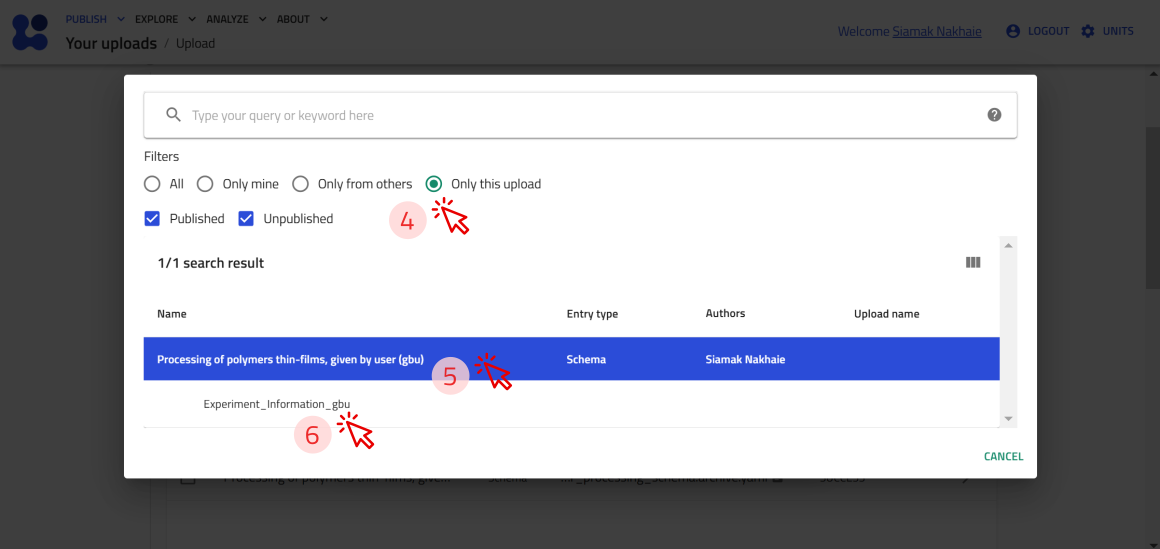
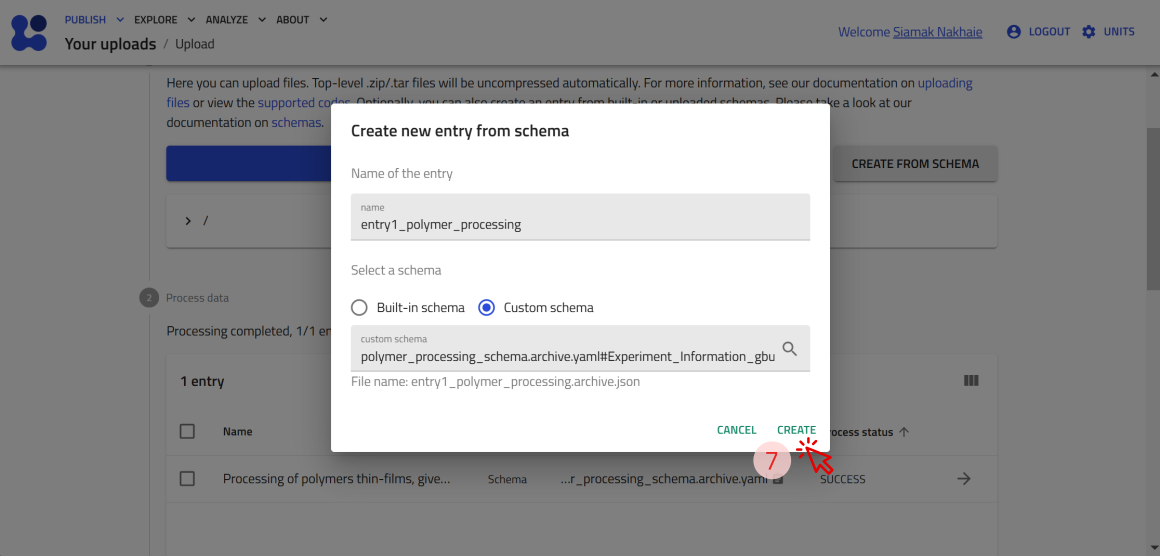
After this, you will be able to see the custom ELN, opened in the DATA tab. You can take some moment and inspect different tabs, e.g., OVERVIEW tab and DATA tab, the quantities and the subsections we have here.
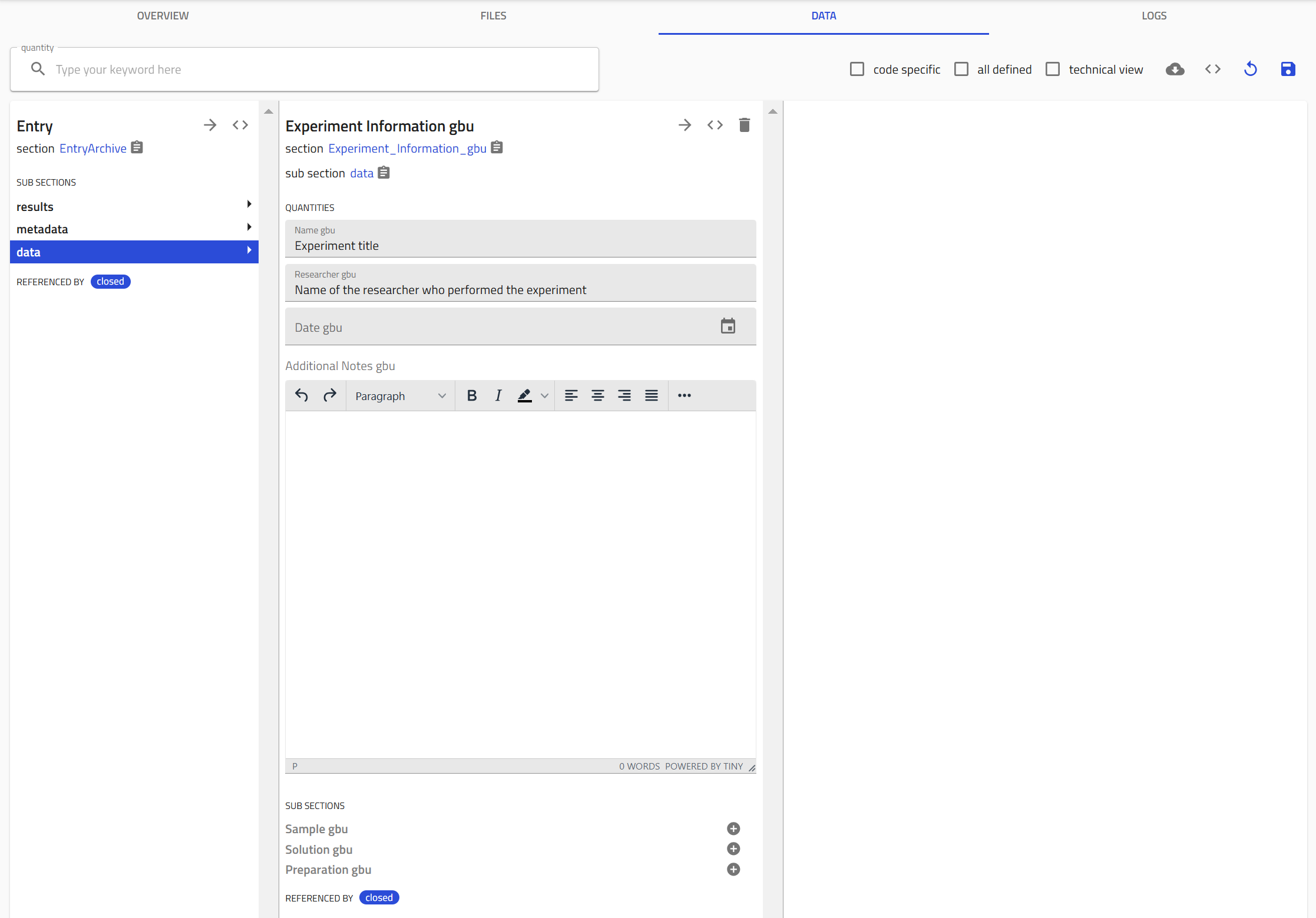
Guidelines for Building a Custom ELN Schema¶
To build a custom NOMAD ELN, you need to use the NOMAD metainfo schema language, primarily written in YAML. Your custom schema file must have the ending extension .archive.yaml
1. NOMAD's archive.yaml files start with the definitions keyword, and must have a name, and can have a description.
NOMAD syntax is:
Example:
2. A schema can have several sections.
NOMAD syntax is:
3. Sections can inherit structure and definition from NOMAD's base_sections or other sections.
When inheriting from a NOMAD base section, use the base_sections keyword and list the desired base sections you would like to inherit from. The keyword base_sections additionally allows you to also inherit from other sections (e.g., within the same schema or even a section that have been published in NOMAD, see schema package references in NOMAD Documentation). Inherited sections can be given in a python list, or subsequent indented lines starting with a dash, -.
Example:
definitions:
name: My NOMAD ELN
description: Custom ELN schema.
sections:
My_first_section:
base_sections:
- nomad.datamodel.data.EntryData
- nomad.datamodel.metainfo.eln.Sample
My_second_section:
My_third_section:
or alternatively in the form of a Python list:
4. Each section can contain quantities, other sections, and subsections.
Each section can contain a set of quantites that need to be captured by the ELN. The quantities represent the parameters of your measurement or processing conditions. In addition, sections can also contain subsections. When including subsections, you need to tell NOMAD the subsections you included are themselves a section. How? By including the keyword sections: in the next indented line (see bottom example). A list of editable quantities can be found here.
NOMAD syntax is:
definitions:
name: My NOMAD ELN
description: This is an electronic lab notebook schema that includes several sections.
sections:
My_first_section:
base_sections:
- nomad.datamodel.data.EntryData
- nomad.datamodel.metainfo.eln.Sample
quantities:
sub_sections:
My_first_subsection:
section:
My_second_subsection:
section:
My_second_section:
My_third_section:
5. Quantities can be defined with type, shape, unit and other properties
Quantities define possible primitive values. The basic properties that can go into a quantity definition are type, shape, and unit.
definitions:
name: My NOMAD ELN
description: This is an electronic lab notebook schema that includes several sections.
sections:
My_first_section:
base_sections:
- nomad.datamodel.data.EntryData
- nomad.datamodel.metainfo.eln.Sample
quantities:
first_quantity:
- type: #For example, str or np.float64
- shape: #For example scalar or list (['*'])
- unit: #For example, meters, amperes, or seconds
sub_sections:
My_first_subsection:
section:
My_second_subsection:
section:
My_third_subsection:
section:
My_second_section:
My_third_section:
6. Section and quantities can have annotations
Annotations provide additional information that NOMAD can use to alter its behavior around these definitions and how users can interact with them. The keyword for annotations is m_annotations.
definitions:
name: My NOMAD ELN
description: This is an electronic lab notebook schema that includes several sections.
sections:
My_first_section:
base_sections:
- nomad.datamodel.data.EntryData
- nomad.datamodel.metainfo.eln.Sample
quantities:
first_quantity:
- type: #For example, str or np.float64
- shape: #For example scalar or list (['*'])
- unit: #For example, meters, amperes, or seconds
m_annotations:
annotation_name:
key1: value1
sub_section:
My_first_subsection:
section:
My_second_subsection:
section:
My_third_subsection:
section:
My_second_section:
My_third_section:
Example: Inspecting the YAML schema of the polymer processing ELN
Now let's inspect the YAML schema file of the above custom Polymer Processing ELN together. We use vscode to show and edit this file.
Here we started with definitions:, we have a name:, and don't have a description (guideline 1). A schema is a section itself, therefore having the keyword sections: (guideline 4).

Experiment_Information_gbu (guideline 2).

Experiment_Information_gbu section inherits properties from some other sections that should be listed in base_sections (guideline 3), and contains quantities (keyword quantities:) and subsections (keyword subsections:) (guideline 4).

nomad.datamodel.data.EntryData (guideline 3). In order to have data becomming an entry in NOMAD, at least the nomad.datamodel.data.EntryData or other base sections that inherit from this base section should be given here.

Experiment_Information_gbu section: Name_gbu, Researcher_gbu, Date_gbu, and 'Additional_Notes_gbu' (guideline 4). We chose these names (given by the user or gbu); They are not NOMAD syntax.
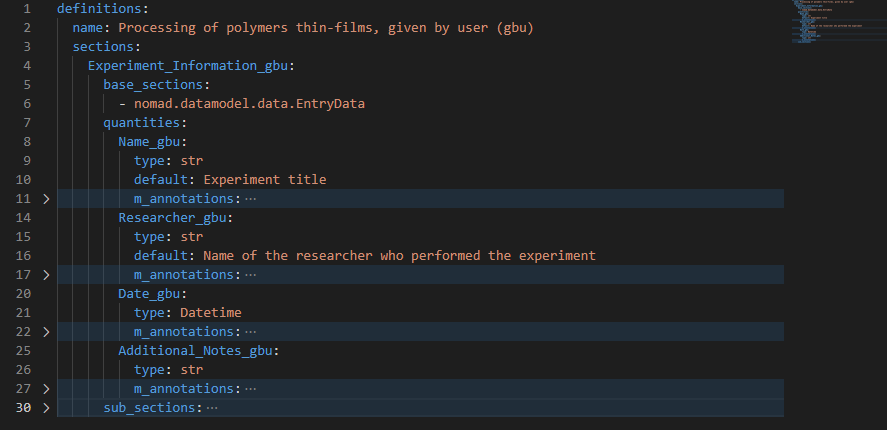
m_annotations, guideline 6).
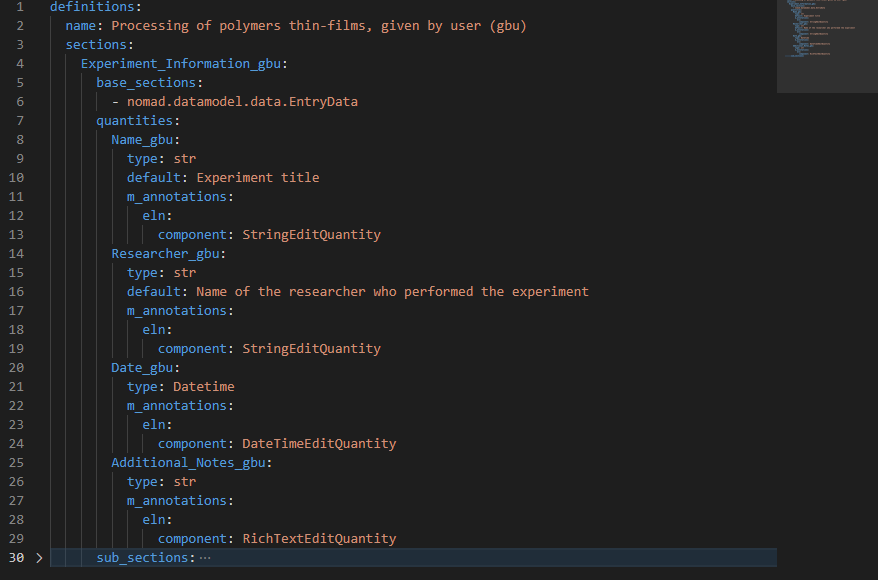
Name_gbu:. Look at the NOMAD syntax and try too read it like this: "I want a field to add a name for my experiment, it should be a piece of small text. I name this quantity something descriptive, e.g., Name_gbu, it should a text, so it will be of type str. Although optional, I want it to have some default value, e.g., to guide the user what it, or what it should be filled most often, so I define its default value in the next line default: Experiment title. I want it to be editable in the GUI. Therefore, I should define it further by annotations. Which annotation? I now now it is related to ELNs, and it is going to be an editable string quantity, so with some intuition and refering to NOMAD documentation and checking other schemas, I write, and care for the indentations.
Now let's inspect what subsections does my Experiment_Information_gbu have.

Experiment_Information_gbu has 3 subsections, each of the 3 being a section itself (guideline 4), and therefore all the guidelines 2-6 apply to each of the 3 subsections, individually.